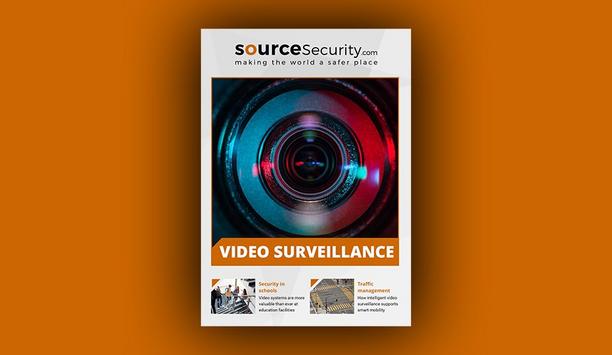Is the security industry shifting toward end-to-end solutions?
Editor Introduction
Products are the building blocks of systems and solutions. How those products are combined, and where the integration happens, is a variable in the physical security market. Before the advent of open systems, a single manufacturer typically combined his own products, using proprietary connections, into end-to-end solutions for customers. Open systems undermined that paradigm to some degree and made it possible for customers to pick and choose products from multiple manufacturers to be integrated into a solution. Lately, the pendulum has again swung toward “system solutions,” or end-to-end systems provided by a single manufacturer … Or has it? We asked this week’s Expert Panel Roundtable: Is the industry shifting from a focus on products to emphasising end-to-end solutions? How is that a good (or bad) thing?
For years, the security industry has successfully provided end users with security products such as cameras, ID cards, and electronic door locks. Increasingly, security end users want more than products: they want solutions, and the security industry is changing to respond to that need. The difference is important. For complex security problems, the solution almost always requires more than one product, usually from more than one manufacturer, and likely services too. A handful of products – camera, cables, and monitor – can provide basic video monitoring. Today, a security solution combines these on a flexible and scalable platform with a video management system (VMS) that delivers situational awareness to accurately detect abnormal behaviors and trigger alerts. Unlike products, solutions can help investigate incidents and possibly even end potentially dangerous situations before they cause harm. Manufacturers and integrators that provide solutions will foster lasting relationships and help to mitigate risk.
The industry is moving towards end-to-end solutions as customers want a full solution and don’t want to worry about the specifics that drive it. There is no reason why this should be a bad thing for the security industry, but it does mean that we sometimes need to “think outside the box” to offer exactly what customers want. This will undoubtedly involve embracing true open protocol systems, which have rapidly become an industry must-have as they give real choice to customers. Card-to-phone credentials have also become popular, and people are far more aware of the benefits of data mining to drive economies. The general move towards IoT will undoubtedly encourage even greater usage of data mining and ultimately, security systems will just be seen as part of the whole technology ecosystem. Customers will simply want these solutions to be reliable and to work efficiently.
Many low-cost manufacturers have entered the physical security market in recent years. To combat price pressure and to ensure end-users get the most out of their investments, systems integrators have indeed shifted to an emphasis on solutions. Manufacturers have reacted by either building their own end-to-end solutions or growing their community of partners to address the need through best-of-breed options. While the total solution should be the focus of any installation, there is risk in deploying a complete end-to-end solution from a single manufacturer as you may not be leveraging the best technology for each functional requirement. In addition, tackling a full solution as a single project adds complexity and introduces installation challenges which can ultimately lead to issues with customer satisfaction. It is always my recommendation to implement and tune your core technologies first; once proven stable, continue by adding best-of-breed products that leverage and complement the core technologies.
The industry is in a state of evolution as the shift to end-to-end solutions is becoming more popular, specifically within small- and medium-sized systems that prefer openness. IP began in the enterprise and as the market matured, it made its way to small and medium businesses as they also want flexibility, better image quality, etc. and for those systems it is more important to have an end-to-end solution that is easy to sell, easy to install, and easy to use. However, in enterprise systems the best of breed, open system is still preferred by most end customers and integrators.
Editor Summary
Customers buy end-to-end systems, not individual products. Or even more to the point, they buy solutions to their problems, not technology. But what is the most cost-effective and efficient means of providing an end-to-end solution? Should it be integrated at the manufacturer level or by an integrator and based on open systems? Our Expert Panel Roundtable offers several views on the subject, all focused on the need to provide customers with exactly the systems they need. Does the best solution come pre-packaged from a manufacturer or should it be assembled by an integrator using best-in-breed solutions? The answer may depend on the market or even the individual customer. In our large industry with its range of use cases and technology approaches, it seems both options will remain in play for the foreseeable future. Choice is a good thing.
- Related companies
- Axis Communications
- Milestone Systems
- Pelco, Inc
- TDSi
- Seagate Technology
- Related links
- Axis Communications Access control software
- Axis Communications CCTV software
- Milestone CCTV software
- Pelco CCTV software
- TDSi Access control software
- TDSi CCTV software
- Axis Communications IP cameras
- Pelco IP cameras
- TDSi Electronic locking devices
- TDSi IP cameras
- Pelco CCTV monitors
- TDSi Access control cards/ tags/ fobs
- Axis Communications Storage
- Seagate Storage
- View all news from
- Axis Communications
- Milestone Systems
- Pelco, Inc
- TDSi
- Seagate Technology
Expert commentary
Security beat
Security bytes
- Getting to know Dan Grimm, VP and General Manager of Computer Vision at RealNetworks
- Big wins and the importance of showing up: Insights from SourceSecurity.com editor Larry Anderson
- Setting goals, business travels and radioactivity: Success secrets from Tiandy's John van den Elzen
- Getting to know Jeff Burgess, President/CEO at BCDVideo
Multi-residential access management and security
DownloadGuide for HAAS: New choice of SMB security system
DownloadPrecision and intelligence: LiDAR's role in modern security ecosystems
DownloadHikvision: Solar powered product introduction + HCP
DownloadVideo surveillance
DownloadDahua DH-CS4010-8GT-60 10-Port Cloud Managed Desktop Switch with 8-Port PoE
Verkada TD52 Cloud-Based Video Intercom
exacqVision IP08-64T-R1XW-E X-Series 1U Rdnt IP NVR 64TB RAID5 Windows OS with 8 IP Ent Lic



















